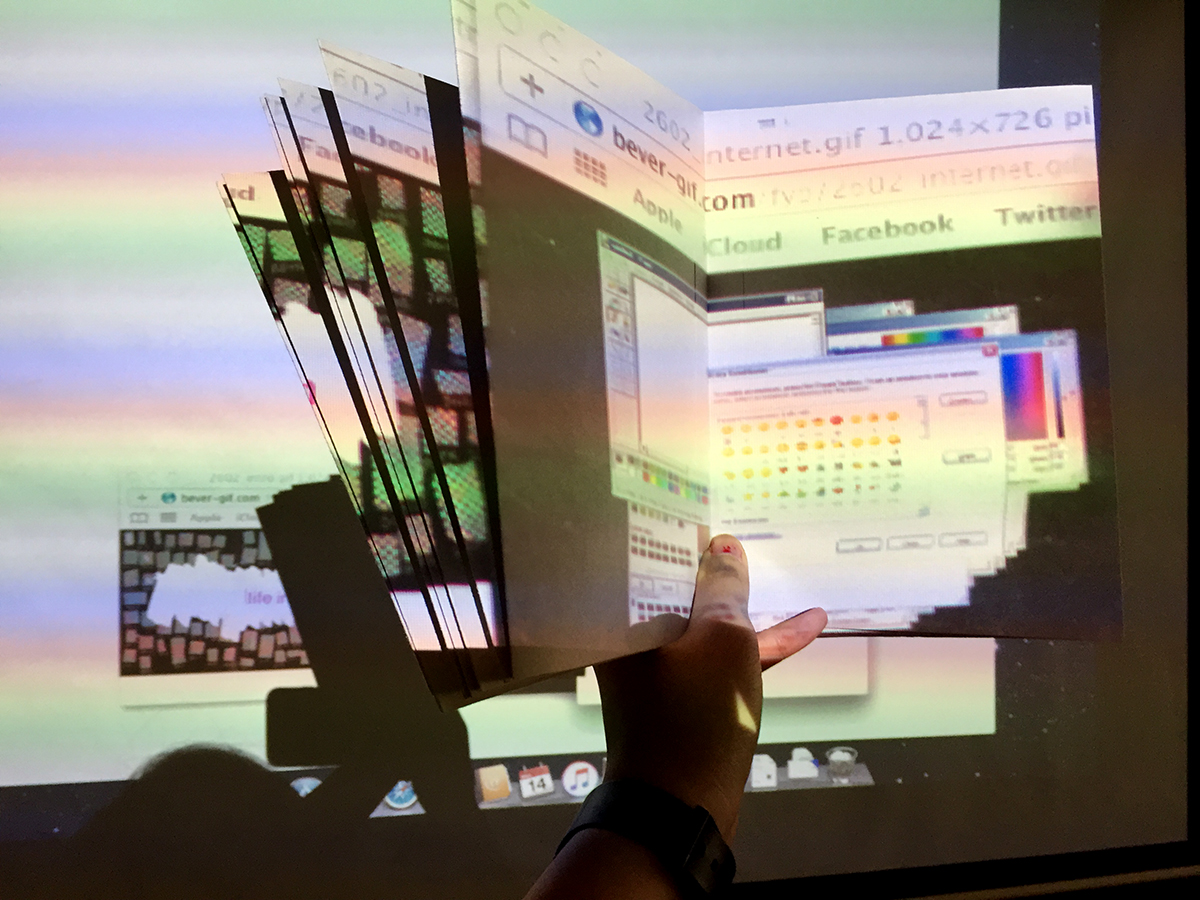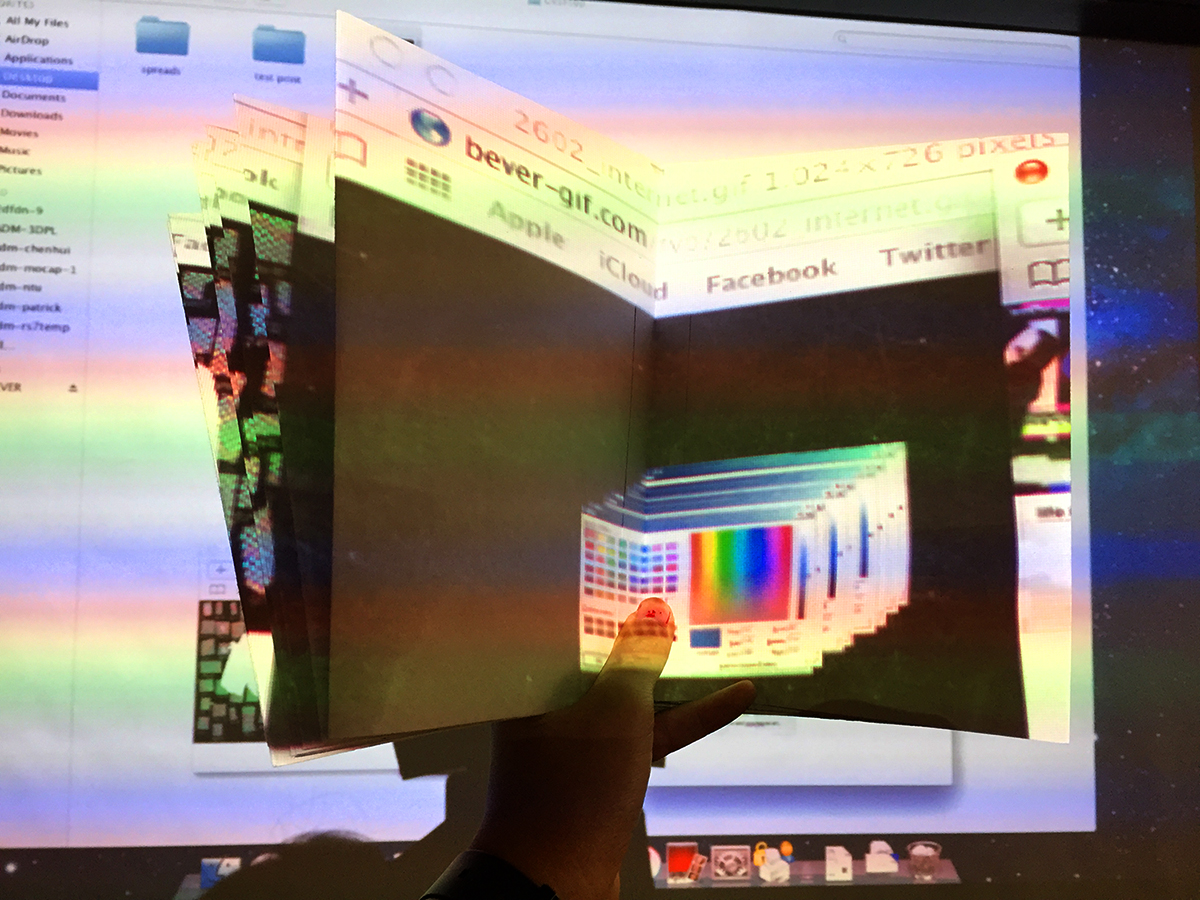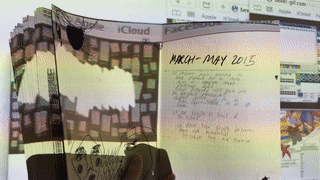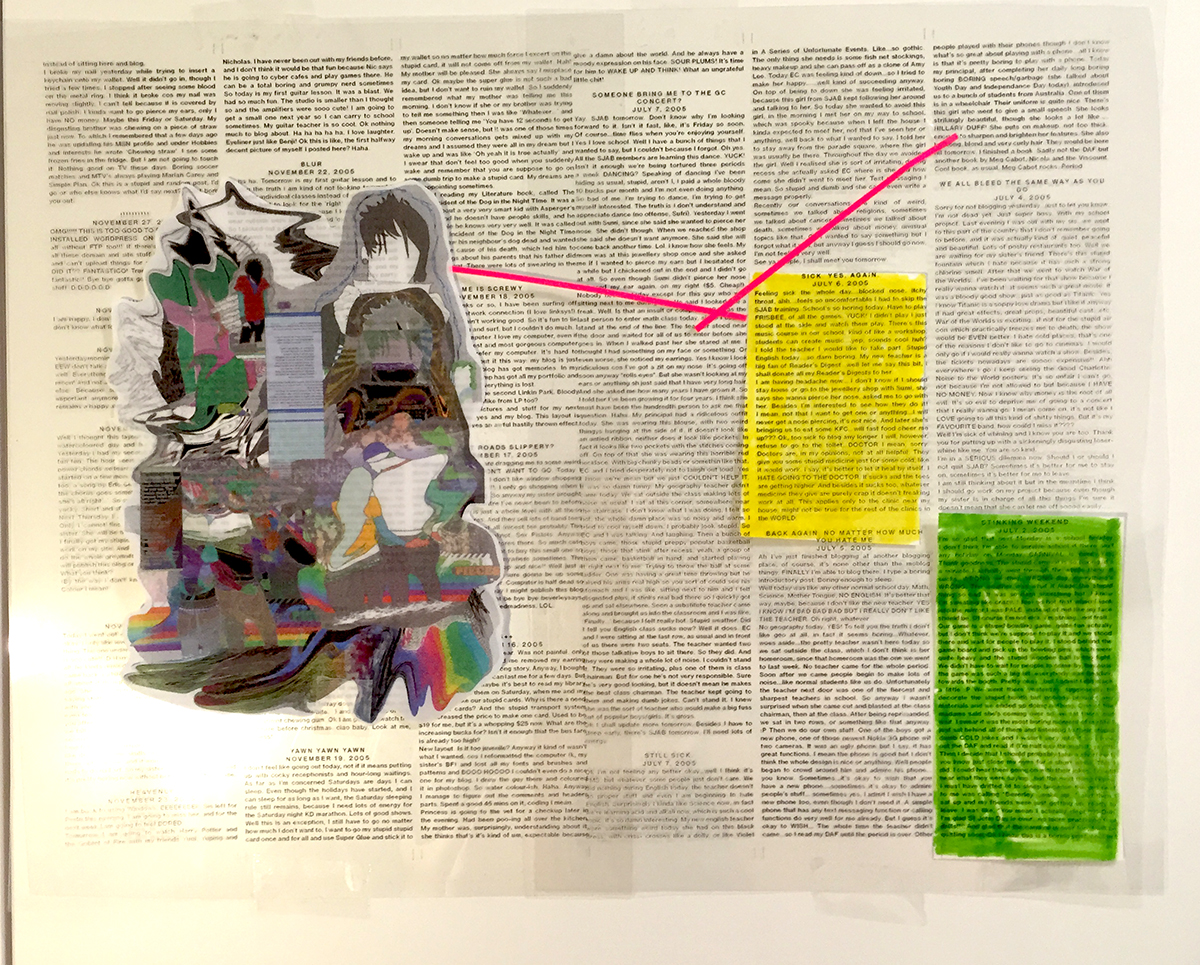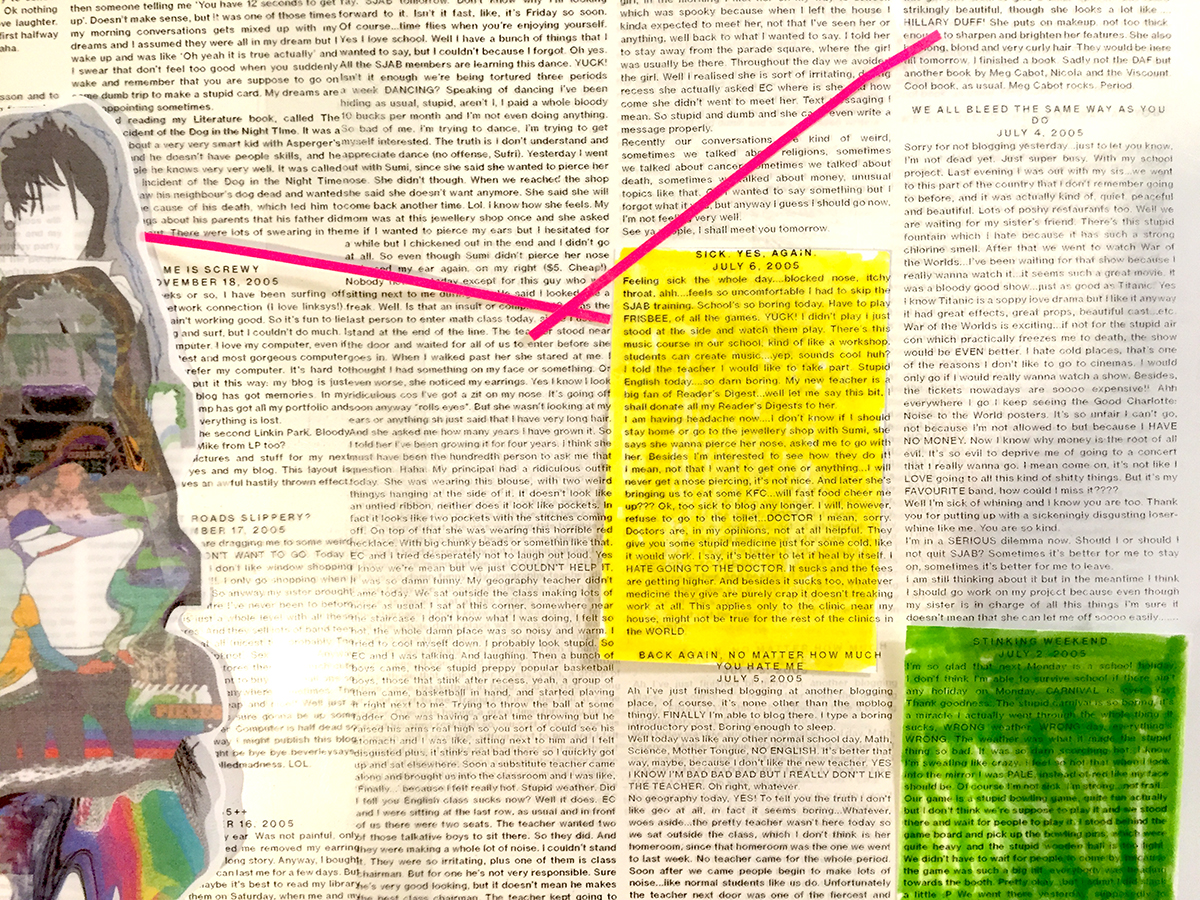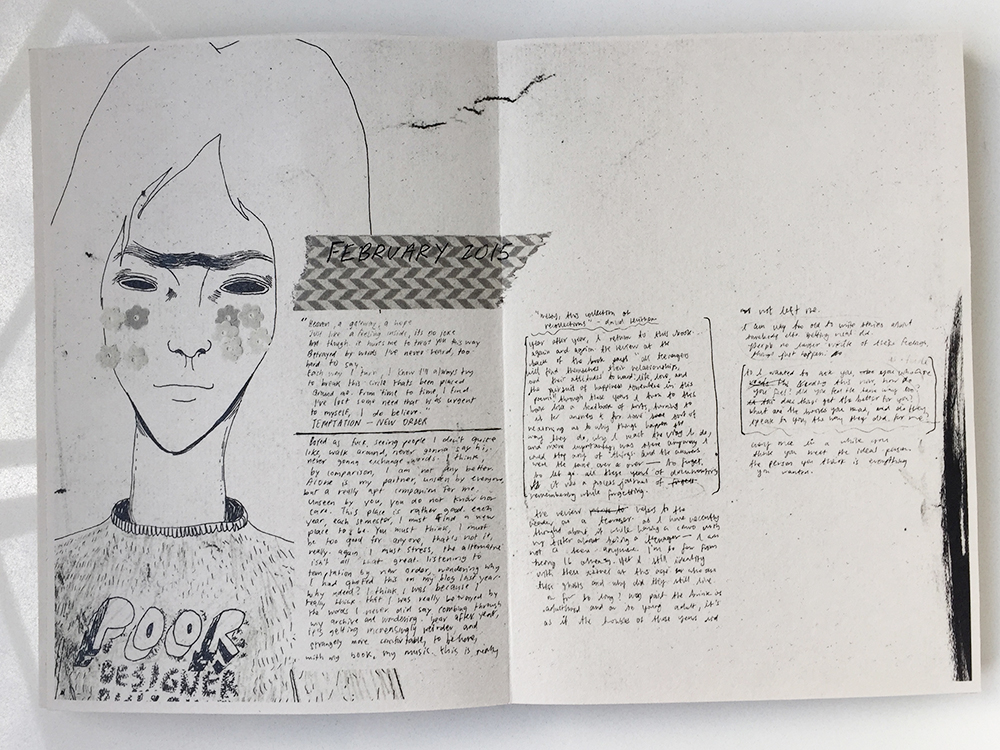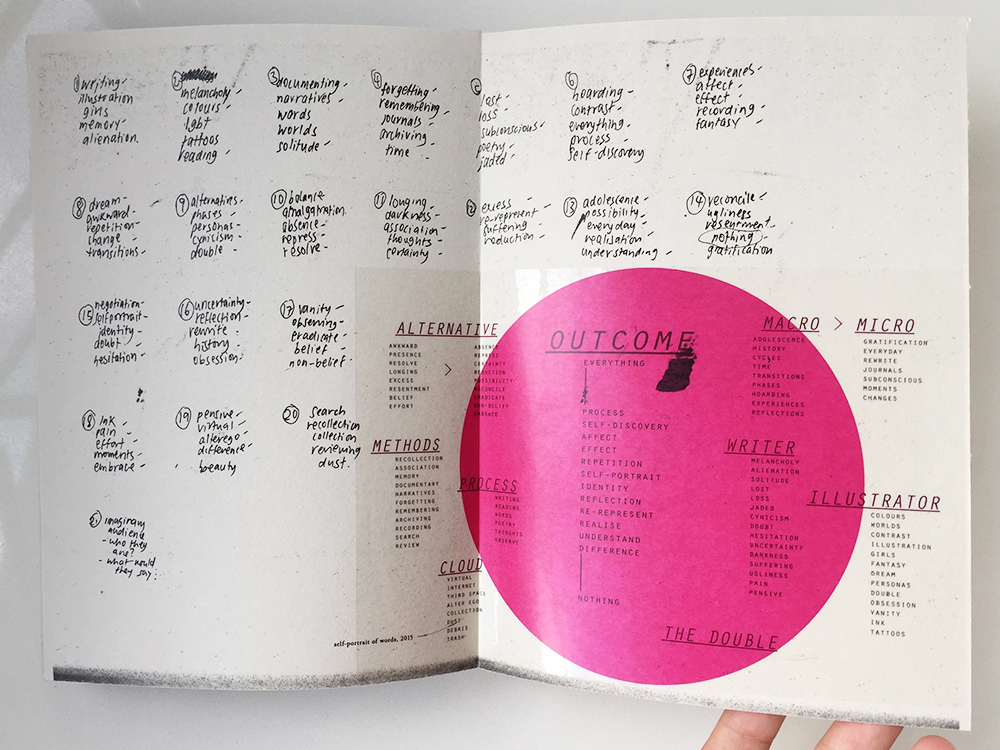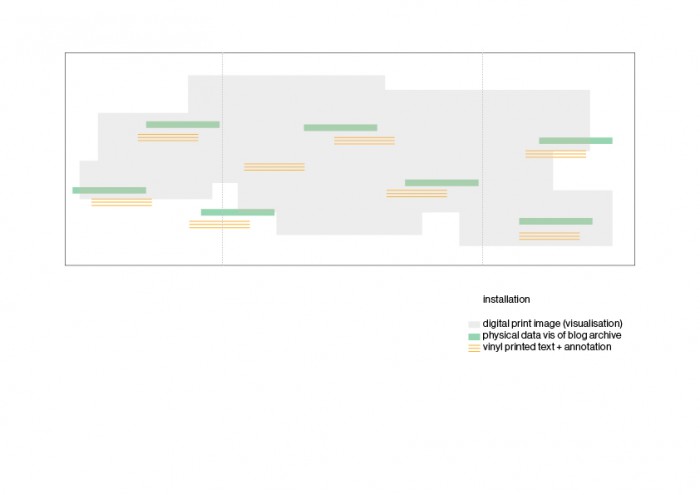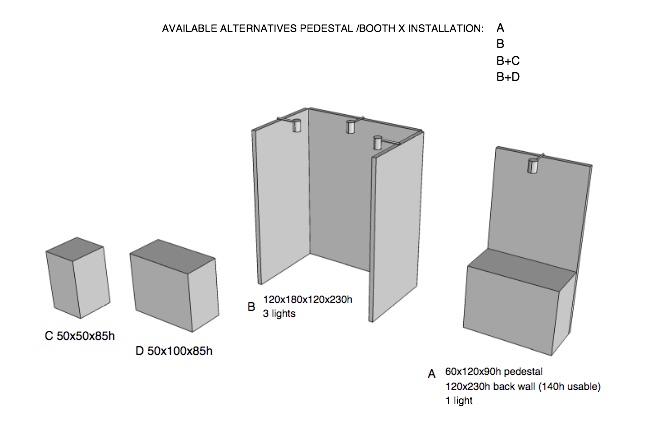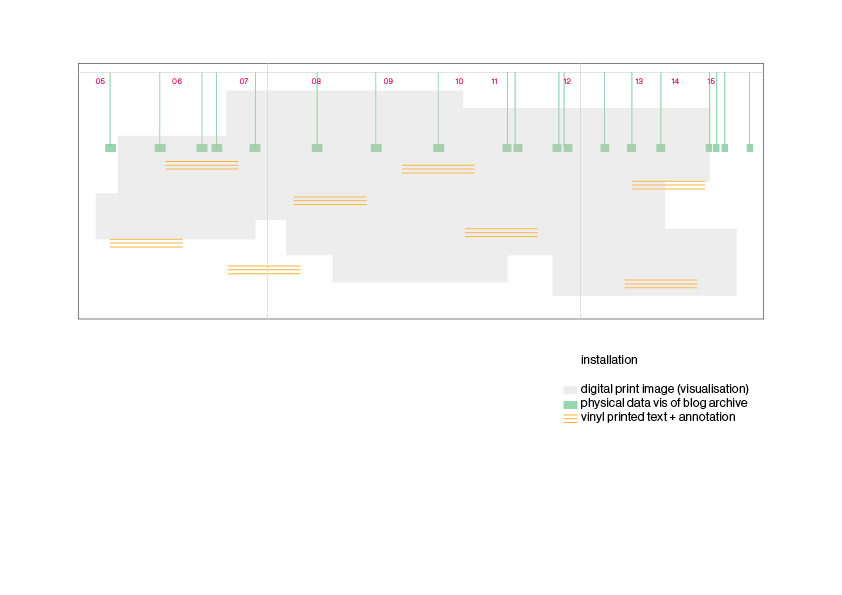Lately I keep thinking about how the installation will come together. Working a bit on each aspect of my project, I realised that they shouldn’t exist as separate outcomes. I wanted to see how I could fuse both digital and print together. I also hope I can set up my work early so that I can work in situ. I really want to put things up as I go and rearrange them.
I played around with the projector in the VC lab and layered some animated collage against my process book.
What I wanted to do was to make the animated collage a part of the giant map that I am doing and see how I can do away with viewing the ‘live data’ part of my work on the computer and incorporate with the big map and the blog archive.
Some gifs I made in attempt to capture the moving images against paper. I really love it, it makes the work come alive in such an exciting way. I want people to be able to immediately immerse themselves in this installation space of mine and my hybrid processes of making my work. Like I was saying in my previous post, I really wanted to see how I can go for a tactile approach to digital media. Which brings me to the next part of this post…
I made a prototype to show how I am putting together my big map, connecting all the concepts existing in my work. The elements of the map is set against my blog archive:
- collages that I put together to reflect virtual nostalgia.
- collages are connected using pink “branches” to the entries that are colour coded.
- coloured entries are part of the database that I’ve been building and collecting on Google Sheets
Hopefully I am able to project the animated gifs on the wall space. Alternatively, I am considering installing iphones or ipads on the wall to display the animated work.
Lots of ideas going on this week… hope to share all on Friday.
